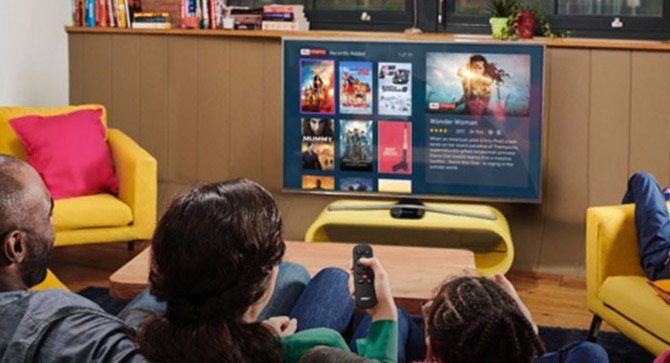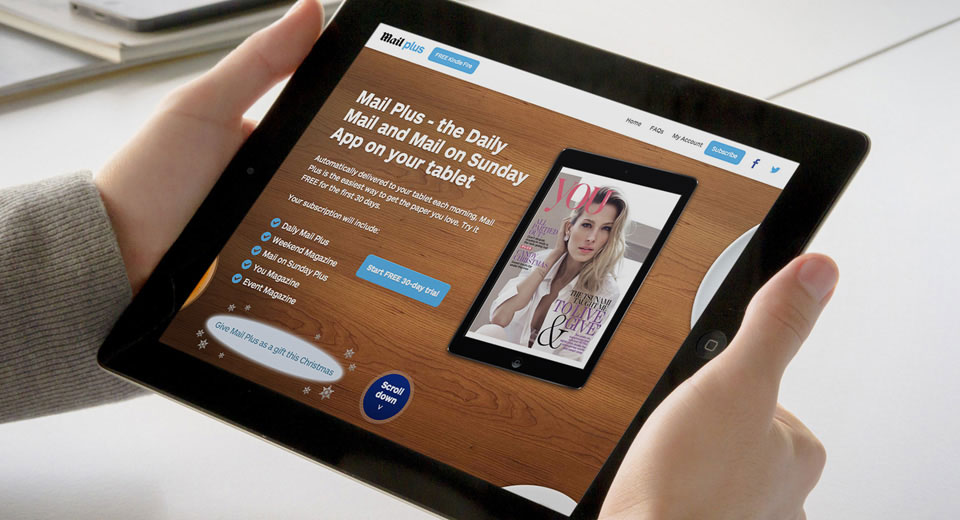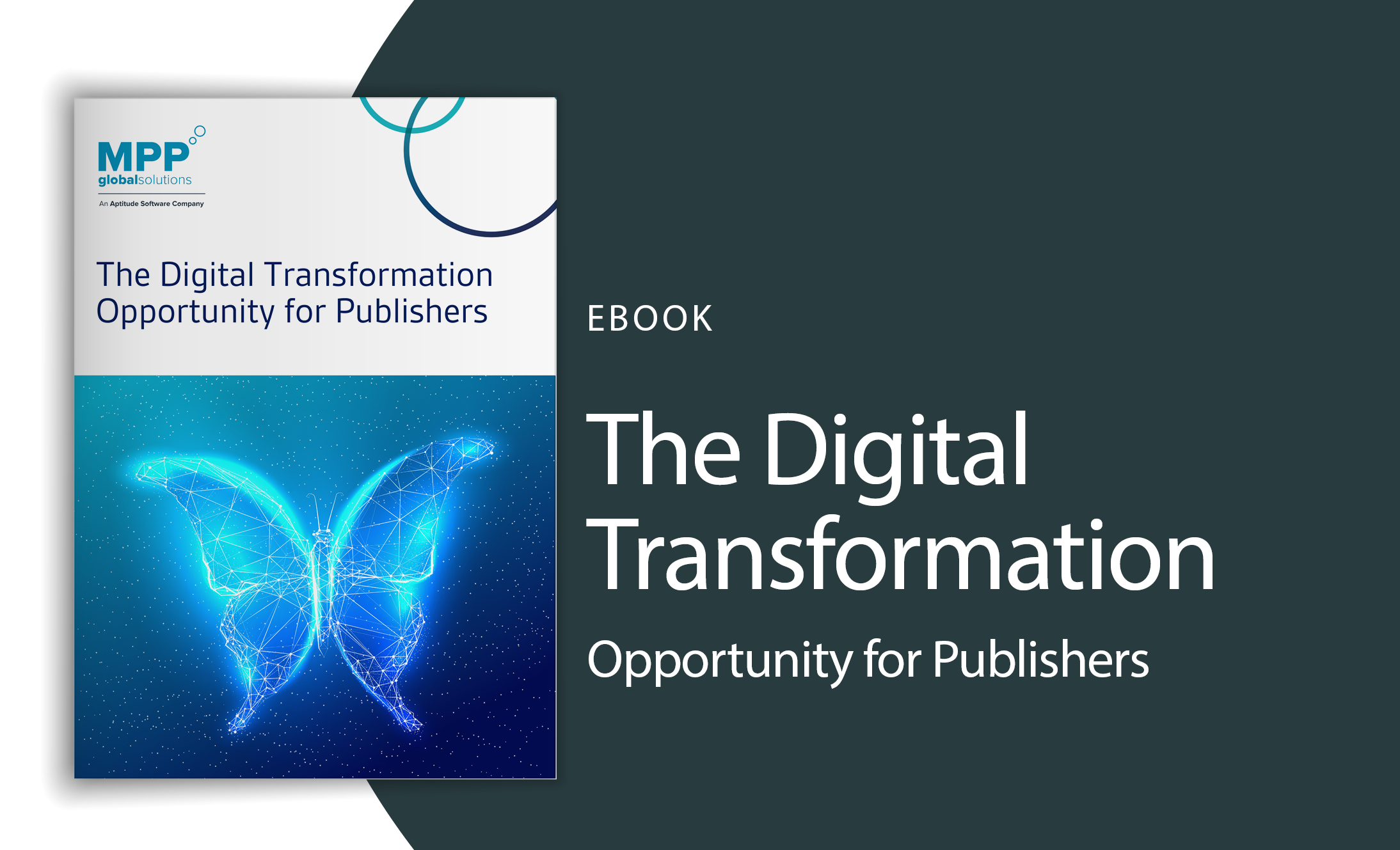IFRA World Publishing Expo 2019 Round-Up: Time for Publishers to Think Reader First?
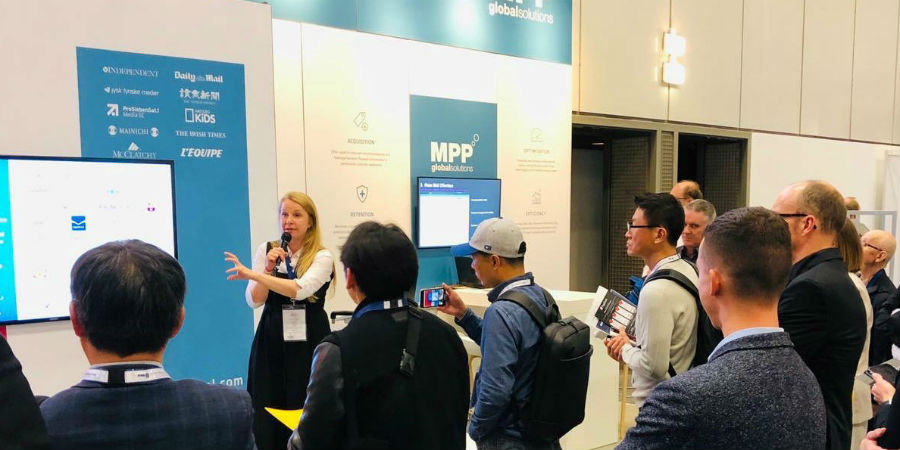
IFRA World Publishing Expo is one of the world’s most influential publishing shows and took place in Berlin this month.
MPP Global’s publishing specialists were at IFRA and DCX, speaking to hundreds of delegates across the expo while Ana Lobb, VP Media & Publishing EMEA, spoke about digital transformation and operational best-practice for subscriber acquisition, retention and revenue development cross-brand and cross-device.
Here, we’ve compiled our key learnings and news from the insightful event:
Economist Demonstrates ‘Reader First’ Product Management
One of the biggest trending topics of the talks at IFRA was ‘reader first’, with Marina Haydn, Executive Vice President and Managing Director, Circulation at The Economist making it central to her keynote speech. Marina made the point that reader choice is essential, giving them many options for consuming The Economist’s content – print, digital, newsletters, podcasts, and more – and highlighted three central pillars of their reader first strategy:
- Focus on the customer
- Perfecting product development
- Pricing, pricing, pricing
One way The Economist focused on the customer was by conducting regular surveys, which uncovered the realization that their subscribers thought they were being undercharged, allowing them to introduce ‘infrequent but substantial price increases’. The Economist charges the same for print and digital subscriptions, while over half of their subscribers opt for the combined print/digital option, with that audience group also spending the most time-consuming content too. What’s interesting is that The Economist have multiple Apps in different formats, enabling readers to choose the one they prefer, and the split is pretty even, what The Economist have recognised here is the diversity of their readers, which goes a long way towards sustainable long term relationships with their audience.
It’s Time to Get Streamlined
A common theme was around the benefits of a streamlined sign-up process for acquiring new subscribers.
The balance between wanting to get as much data from new subscribers and not wanting to put them off subscribing in the first place is as old as subscriptions themselves. But if you think about it, we already know so much about customers, do we really need to ask for more upfront? Publishers are seeing great results from a slimmed-down approach.
Adam Fisco from The Seattle Times was quoted as summing up their successful experimentations: “When we launched [a streamlined, six-field subscription form], we saw a 35% increase in our conversions. Then when we launched the Amazon Pay, we saw an additional 19%. Coming soon is Apple Pay — basically it’s your fingerprint and you’re done. We’ll collect your money and you’ll be a happy subscriber.”
The Athletic is a good example of streamlined sign-up done well, using Facebook and PayPal’s 1-Step Checkout to enable readers to subscribe for a 7–day free trial (and beyond) with almost no friction at all.
MPP Global recently trialled a new ‘Express Checkout’ flow with a client in the US, initial results have been awesome with desktop conversions up from 5% to 15% and mobile conversions from 0.6% to 2%. Essentially this process requires only an email address and payment details to be entered, the user then follows prompts to create a password post payment. Further tests follow to optimize design on mobile pages and make payment types such as Apple Pay more prominent on mobile devices, but the results to date speak for themselves.
MPP Global’s publisher–centric roadmap and focus on user journeys and emerging payment types means that publishers can simply ‘turn on’ new payment types or sign on features, rather than having to continually develop and keep up with changing consumer trends.
Increasingly, optimization of the checkout process and one-click payments through Facebook, Google, Yahoo Japan, Amazon and Apple Pay become essentials for converting subscribers beyond the paywall.
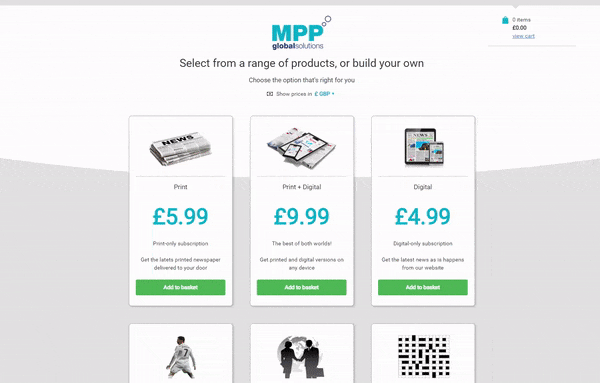
A unified approach to retailing print and digital goods
Personalisation/Product Diversification – Beyond the Paywall
Over the past few years, the publishing industry has speculated on various hot topics and new approaches; Big Data, Dynamic Paywalls, Propensity Modelling... but at an operational level there is more to conversion than simply getting people through the gate, it’s about showing the right product to the right person in real time, I like to think of it as ‘programmatic product sales’.
Product and contract management is increasingly complex with publishers juggling thousands of iterations of the same product across multiple systems. The issue is that integrations to front end customers journeys are so complicated that it takes many publishers up to eight weeks and significant investment to launch a new pricing model or contract, because of that, innovation grinds to a halt, and so does the revenue.
We have more data than ever before about consumers, we know they are individuals, with varied preferences relating to their source (FB, Previous customer etc), type of content they prefer, device they use, payment method, business model (on-demand/recurring), offer type, currency & tax. But what good is all the data if you can’t action it quickly?
As Marina from the Economist says, it’s all about giving the consumer choice. Imagine if your users could build their own bundles, cross device, cross brand with a magazine or newspaper and maybe physical products? Alternatively, what about the customers who just want to read now, today without commitment, or just the podcast, just sports content an event ticket? Sound good?
By implementing “wysiwyg” style tools and removing dependency on tech teams, commercial staff can experiment with new business models, price points and offers on the fly.
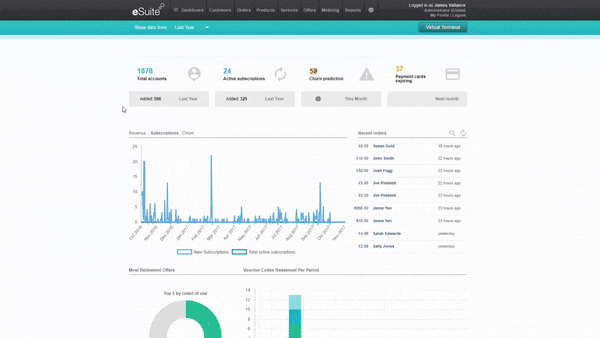
Launch new print & digital products & offers in real time
Internally publishers’ teams are changing with data and engagement specialists who have a ‘digital first’ mindset, some of the most ‘transformed’ are beginning to understand how to adjust content to suit the needs of readers, maybe in topic, but also in format decisions with the inclusion of voice and video. With everything else moving at pace, it’s time to invest in subscription technology that offers the flexibility needed and speed required to succeed in what is an ever changing sector.
 us
us 


